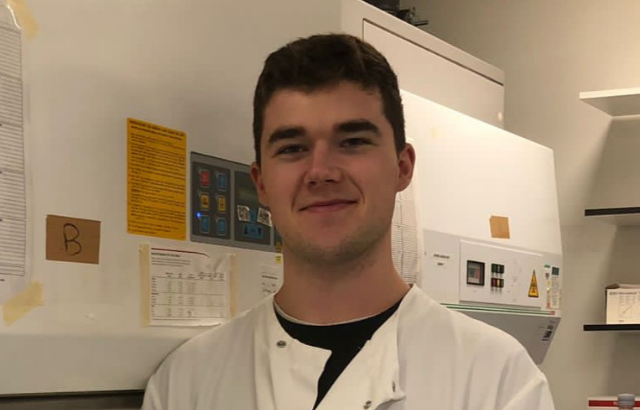Blizard profile: Thomas Willott
In August 2020, The William Low Trust announced its commitment to fund a PhD student at the Blizard Institute to help find a cure for medulloblastoma – the most common high-grade brain tumour in children. PhD student Thomas Willott has now joined Professor Silvia Marino's team to help tackle this issue at the Brain Tumour Research Centre of Excellence at the Institute. We catch up with Tom to find out more.

Thomas Willot
Name: Thomas Willott
Role: Postgraduate Research Student
Centre: Genomics and Child Heath; Brain Tumour Research Centre of Excellence
You’ve recently joined The Brain Tumour Research (BTR) Centre of Excellence at the Blizard Institute – can you tell us more about how you came to be a member of Professor Silvia Marino’s team at the Centre?
After completing my BSc in Biochemistry (Genetics) and MRes project focused on cancer imaging, I knew I wanted to pursue a PhD project in cancer research encompassing the various cutting-edge genomic and transcriptomic techniques I was introduced to during my undergraduate degree. Having also been fascinated by research into the brain during a summer placement in a lab focused on Alzheimer’s disease, the PhD in Professor Silvia Marino’s lab in the BTR Centre of Excellence at the Blizard Institute greatly appealed to my various interests and previous experience, allowing me to perform exciting research to improve our understanding of cancer and how it can be treated to provide the best outcomes for patients.
What will your research be focussing on during your PhD?
My PhD focuses on discovering novel therapeutic combinations for paediatric medulloblastoma patients with poor prognosis, where the current standard of care involving chemotherapy can cause severe side effects with lifelong implications. In addition, my project will aim to dissect the epigenetic effects of different treatment combinations in order to understand why patients may develop resistance to treatment leading to disease recurrence.
What’s the most interesting thing you’re working on right now?
I’ve just begun investigating new 3D models of medulloblastoma which have the potential to greatly enhance our understanding of the way in which tumours respond to treatment through recapitulating the structure and morphology of the human brain, allowing us to explore additional aspects of drug response and overcoming tumour resistance to improve translation into the clinic.
What are you passionate about?
Outside of the lab, I’m a keen musician and rugby fan, as well as having a passion for food, cooking and most importantly eating.
Tell us something that we don’t know about you!
My favourite place in the world is Hong Kong.